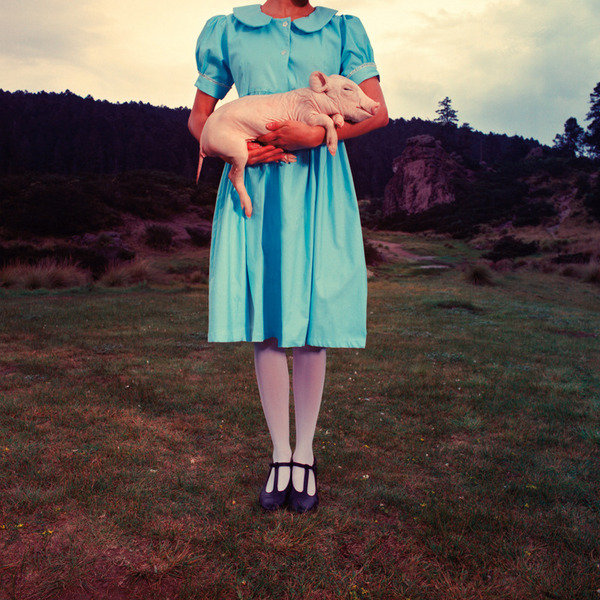Two exhibitions
dal 13/7/2012 al 24/8/2012
Segnalato da
Alejandra Laviada
Melba Arellano
David Corona
Claudia Hans
Eunice Adorno
Jose' Luis Cuevas
Kenia Narez
Omar Gamez
Alinka Echeverria
Roberto Tondopo'
Allejandro Cartagena
13/7/2012
Two exhibitions
Kopeikin Gallery, Los Angeles
'Looking at Mexico' features a collision between images of violence, faith, dreams, abandonment, and wealth. Suburbia Mexicana is a solo show by Allejandro Cartagena.

Looking at México
Curated by Allejandro Cartagena
Kopeikin Gallery is pleased to announce an exhibition of contemporary Photography from Mexico curated by Alejandro Cartenega.The exhibition will present a collision between images of violence, faith, dreams, abandonment, and wealth; a world very much in tune to what México is today. The richness of photographic images being produced in México today is broader and richer than ever. Even while a feeling of detriment prevails in most Mexican cities and its inhabitants due to insecurity and social unrest, photography is at its best in such times, reflecting these situations or those far from them.
This exhibition will feature work by
AlejandraLaviada
Melba Arellano
David Corona
Claudia Hans
Eunice Adorno
José Luis Cuevas
Kenia Narez
Omar Gamez
Alinka Echeverria
Roberto Tondopó
Alejandra Laviada´s images re-uses abandoned spaces and objects looking to produce striking readymade sculptures through her interventions. Melba Arellano´s work presents us with a new rural Mexico filled with dramatic and beautiful spaces and people. David Corona´s staged images reference cinema and the eeriness of industrial and peripheral Mexican cities at night. Claudia Hans´s work introduces us to Mexican children perceive death by an amazing set of portraits. In Eunice Adorno´s images we find ourselves looking into a Mexico embodied by women Mennonites and their way of life. Jose Luis Cueva´s idea of devotion produce questions of how people give themselves in to something they can´t see and just believe in. For Kenia Narez it is the idea of the fine line between the good and the evil in a child's life that makes her present images that strike as inoffensive but that are inevitably charged with violence. Omar Gamez looks at the relationship of the human body and nature and there interdependence in a metaphorical and performatic way. Alinka Echevería sees how people join in to practices of faith that resonate with past Mexican cultures and how contemporary Mexico is sometimes unable do detach itself from them. Finally Roberto Tondopó looks at the sense of belonging in the age of adolescence through staging ordinary scenarios with family members.
It is through all of these diverse artists that we can perceive an ever shifting country that struggles with its past; politically, socially and culturally. There is no one Mexico anymore. There are only hints of what the fragments look like from the surface of these images.
---
Alejandro Cartagena
Suburbia Mexicana
Alejandro Cartagena (http://alejandrocartagena.com) projects employ landscape and portraiture as a means to examine social, urban and environmental issues. He moved to Monterrey, Mexico, in 1990 at the age of thirteen. The third largest city in Mexico, Monterrey has long been Mexico's industrial capital. The past sixty years have seen massive population boom (in 1950 there were 339,282 residents; today there are over 3,800,000) so Cartagena witnessed continual urbanization and expansion throughout his teenage years.
Cartagena photographs the particularities of the Monterrey suburbs, which like those in other Latin American cities are relatively new and often hastily built, reflecting a general disregard for planning. The pursuit of immediate financial gain trumped any interest in sustainability.
Cartagena captures both the destruction that rapid urbanization has imposed on the landscape and the phenomenon of densely packed housing, with perpetual rows of tiny houses slicing directly into the foothills of the picturesque mountains that surround Monterrey. The homes are small, generally under 100 square meters (or less than 328 square feet), and usually occupied by four to six people. Only the landscape appears capable of limiting their proliferation, the mountains and rivers the only forces able to contain their sprawl.
Ultimately Cartagena documents the chaos and destruction that result from scant or misguided urban planning. He lives in downtown Monterrey, and he cares deeply about its land, its people, and its future. Understanding that overdevelopment is not just a local problem, he works hard as an artist to share his photographs as one clear plea for responsible, sustainable development in a rapidly changing world.
This text is taken from the essay by Karen Irvine found in Alejandro Cartagena's book "Suburbia Mexicana" published by Daylight and Photolucida. Alejandro will be signing copies of his book the night of his opening.
Cartagena 2
Cartagena's work has been exhibited internationally and has been widely published in print media including Domus, Wallpaper, The Financial Times, Le Monde, Newsweek, Stern, pdn and The New Yorker. His work is in several public and private international collections including SFMOMA, MOCP Chicago and the Portland Museum of Art. Cartagena won the Photolucida critical mass book award, the lente latino award in chile, the salon de la Fotografia Award in Monterrey, the International Street Photography Award of the London Photography Festival and was named one of PDN´s 30 emerging photographers and a FOAM magazine Talent in 2012. He was a finalist in the aperture portfolio award and has been nominated for the Santa Fe Photography Prize, the Prix Pictet Prize, the Photoespaña Descubrimientos award and the Paul Huff Award.
Image: © Kenia Narez
reception and booksigning: Saturday, July 14th from 6:00 - 8:00
Kopeikin Gallery
2766 La Cienega Blvd (just north of Washington) - Los Angeles, California 90034
Our hours are Tuesday through Saturday from 11:00 - 5:00



